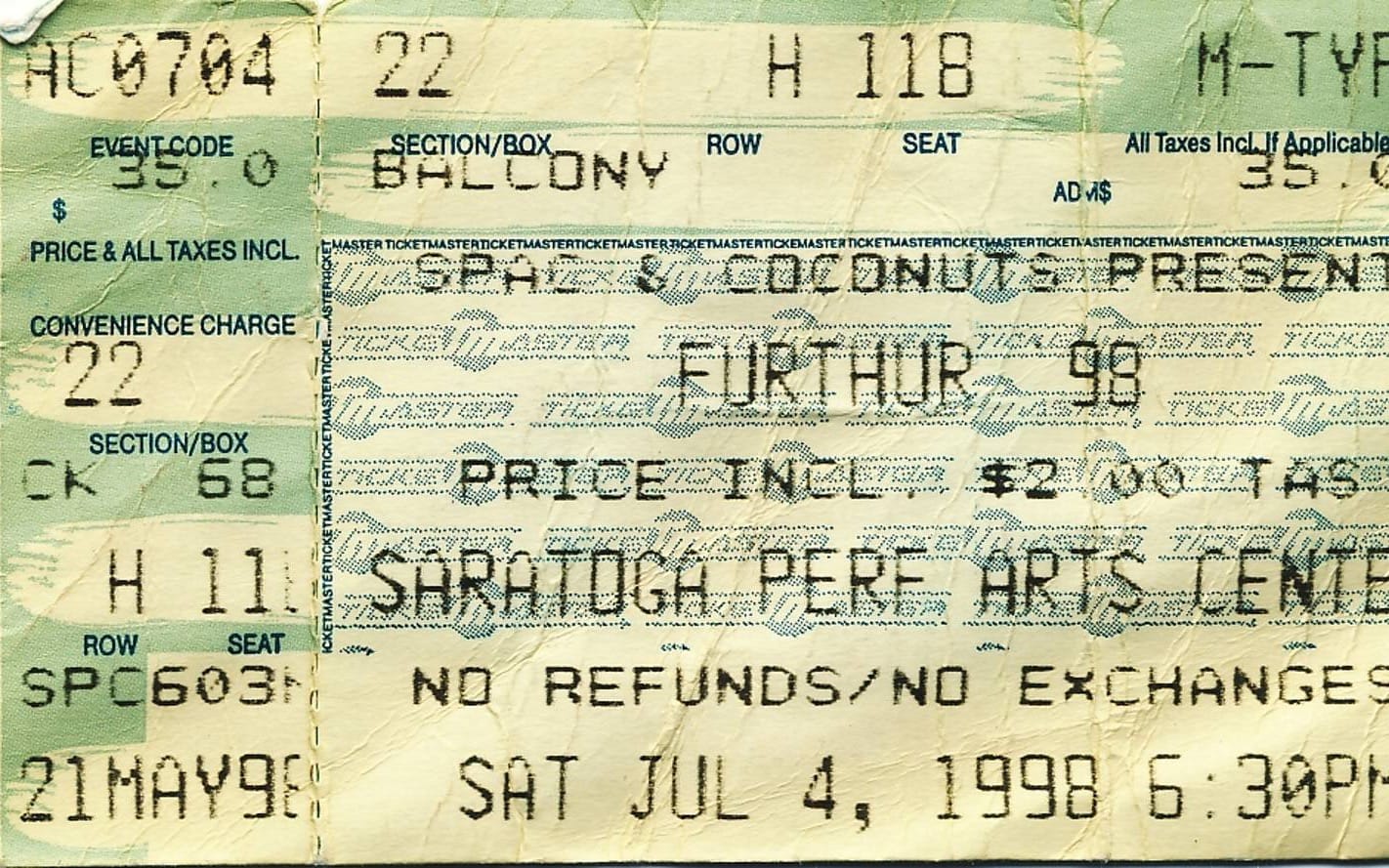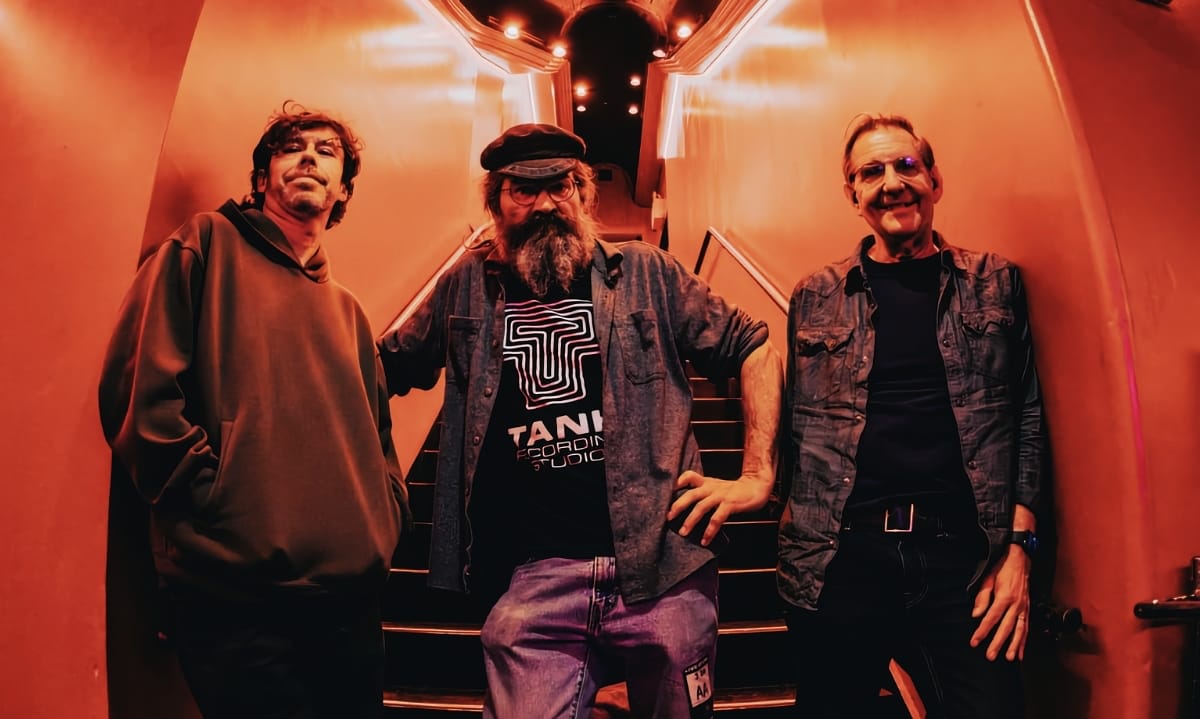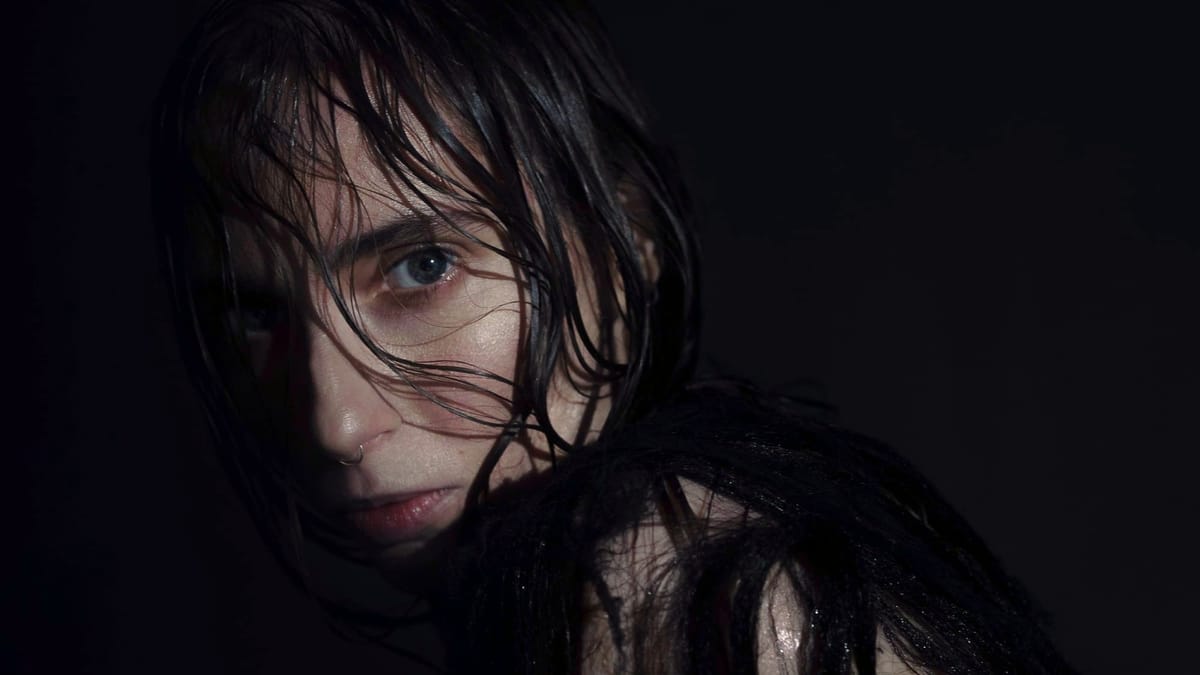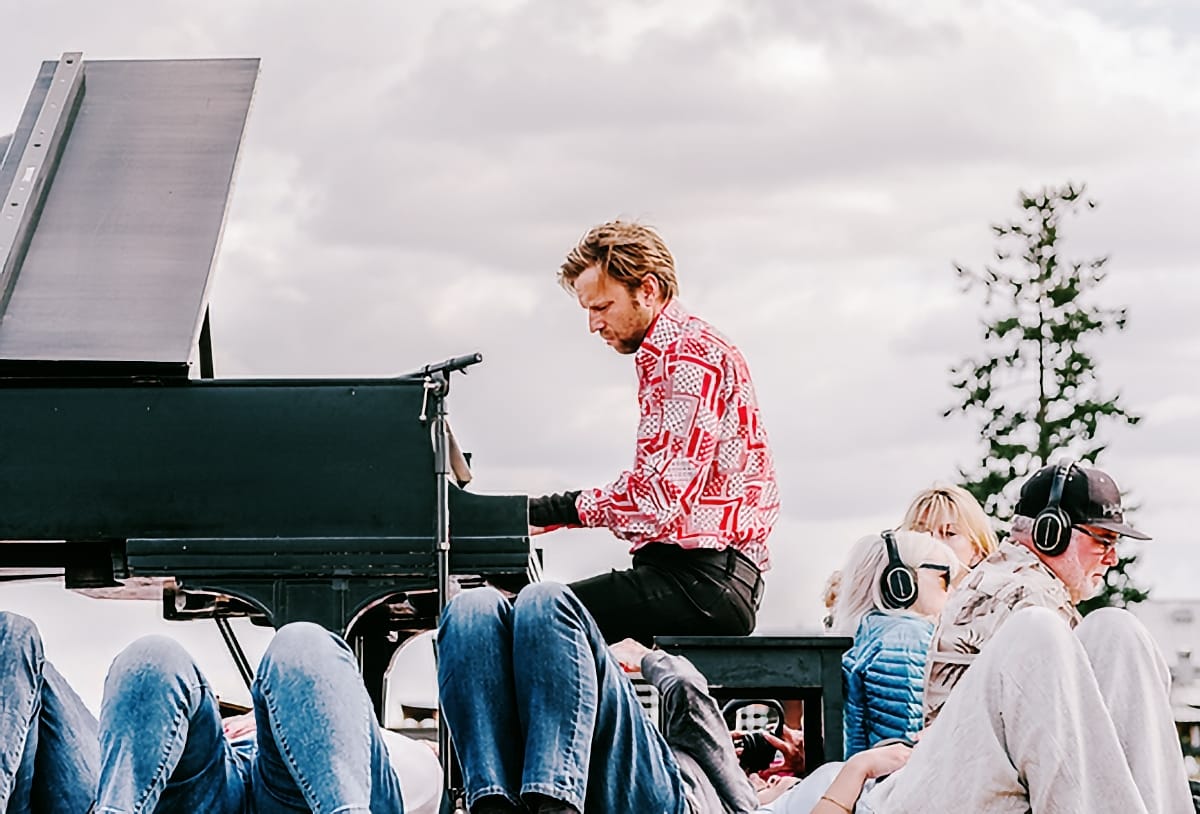The Furthur “festival” tours represented the first attempts by former members of the Grateful Dead to carry on in the wake of Jerry Garcia’s passing in 1995, something that seemed unthinkable at the time. In retrospect, it makes total sense given how relatively young the other band members were when Jerry died and the fact that they were not exactly suited to retire quietly or switch careers.
The Dead were together from 1965 to 1995, a tidy 30 years. It has been just about that long (and about as many lineup incarnations) since Garcia’s passing and with great surprise, remnants of the band, in the form of Dead & Co, have made it back to playing stadiums while other factions can still tour theatres and festivals. The strength of the band’s songbook, with its ability to withstand interpretation and reimagining, as well as the everlasting devotion of generations of fans can make the current state seem inevitable but this was not so in the mid-late ‘90s. While the band members toured alone, together and in countless permutations, it really did take the better part of 20 years – until the Dead’s 50th anniversary in 2015 – for them to get back onto the cultural radar in a meaningful way.
That does not mean they were not making worthwhile music, though I am not sure I was fully on board at the time. I was not a hater, but I was not fanatical. Truth be told, I was burnt out on the Grateful Dead experience by the time Jerry died. For the better part of two years (at least) before his passing, their shows were incredibly hit or miss, more-so than usual, and I was busy trying to get my Real Life up and running. They were more of a habit to kick than anything else for me. Fun times were had, but I was consuming far better music in other areas.
My experience corresponds with the fact that despite being communal experiences, oftentimes with tens of thousands of attendees, Grateful Dead shows were always intensely personal for fans. Pluck five random Dead Heads from the crowd after a show and you would likely get five different takes – whether the show was good or bad, what the highlights were, if Jerry looked engaged or indifferent, if Bob Weir’s shorts were too short...my personal approach in those initial years of post-Dead tours was to go in with low expectations coupled with curiosity and hope for interesting music. Not too dissimilar to how I approached actual Grateful Dead shows – it was always better to be pleasantly surprised instead of disappointed. For others I knew, these tours were legitimate, logical extensions of the Grateful Dead continuum, and enjoyed them uncritically as such. The shows themselves were a mixture of nostalgia, class reunion, gratitude for being able to see the music live again by at least some of the progenitors and a bit of trepidation or skepticism. I mean, you know, no Jerry?
For the Furthur ‘98 concert in Saratoga on July 4, 1998, the band was called “The Other Ones” and was co-led by former Grateful Dead members Bob Weir and Phil Lesh. Dead veterans Mickey Hart (drums) and Bruce Hornsby (piano), were rounded out by Mark Karan and Steve Kimock on guitars, John Molo (drums) and Dave Ellis (saxophone). The music had all the elements of the Grateful Dead: the fusion of rock, blues, and psychedelic influences, a very high level of musical capability, and a reliable, even charming, inconsistency.
In these initial tours, it was interesting to watch the band members grapple with their legacy and how to own and well, further, it.
- “Furthur” was the name of the 1939 International Harvester school bus that Ken Kesey and his Merry Pranksters traversed the US and wreaked all kinds of psychedelic havoc in (as doecumented in Tom Wolfe’s The Electric Kool-Aid Acid Test)
- Furthur also makes an appearance in the Grateful Dead song “The Other One”
- “The Other Ones” being the name of the group the former Grateful Dead members play under allows them to claim both vintage 60s legitimacy but also a statement of purpose and stake in the future, as in, “Yes, Jerry may have been the leader, but we are The Other Ones and we have something to say.”
It is only with the benefit of time and a recent re-listening to this show that I have come to recognize the bold audacity in carrying on in Jerry's absence - and how mostly successful it was, even early on. The low points are there. I am not sure anyone needed Mickey Hart's rap/singing on "Fire On the Mountain." I know I did not. But the pleasant surprises abound. An early-in-the show rave up of "Hell in a Bucket". A lively and lovely Hornsby-led arrangement of "Scarlet Begonias" and later on, two bona fide head-turners: a wide open take of Bruce's breakout hit, "The Way It Is", with genuine Grateful Dead-style arrangements and instrumental breaks which precedes Weir's taking over for Jerry on "Bird Song". Gorgeous.
Furthur was billed as a “festival” but it was a two-hour headliner set with two shorter support acts, which for this show were proto-jam band Rusted Root and Electric Hot Tuna, featuring Jefferson Airplane alum Jorma Kaukonen and Jack Casady. Rusted Root was and has been utterly forgotten while Electric Hot Tuna, like Dead & Co, are playing their farewell tour this Summer of 2023. They’ve all earned some rest, or at least the oopportunity to focus on whatever it is they aim to do next with their lives and legacies.
Go Further:
The Truth About Bob Weir's Short Shorts
The Strange Remain - The Other Ones live album from this tour
Spotlight On episodes with Furthur ’98 alumni Steve Kimock, Jorma Kaukonenand Jack Casady
FAQs About This Article
wherein an AI reads the article and suggests a few questions that remain unanswered...
Q: How did former members of the Grateful Dead, especially Bob Weir and Phil Lesh, grapple with the legacy of the band and navigate the decision to carry on with Furthur and subsequent projects after Jerry Garcia's passing?
A: By using different band names, openly addressing Garcia's absence, and focusing on the enduring music and fan base, former Grateful Dead members found ways to grapple with the legacy and move forward with their musical journey.
- Formation of Furthur and The Other Ones:
- In 1998, Bob Weir and Phil Lesh co-led a band called "The Other Ones," which later evolved into "The Dead" and "Furthur" in subsequent years.
- The use of different names allowed them to maintain a connection to the Grateful Dead legacy while emphasizing the continuation and evolution of the music.
- Claiming a Stake in the Future:
- The choice of the name "The Other Ones" conveyed a sense of purpose and a stake in the future, suggesting that while Jerry Garcia was the leader, the remaining members had something meaningful to contribute.
- Acknowledging Jerry Garcia's Absence:
- The band members openly acknowledged Jerry Garcia's absence and the challenges of carrying on without him. The name choices reflected this acknowledgment while asserting their identity as a collective entity.
- Grateful Dead's Enduring Songbook:
- The enduring strength of the Grateful Dead's songbook played a crucial role. The timeless nature of the music allowed for interpretation and reimagining, making it possible for the band to continue without compromising the essence of the songs.
- Cultural Relevance and Devotion of Fans:
- The band's return to cultural relevance around the Dead's 50th anniversary in 2015 demonstrated the everlasting devotion of generations of fans. The enduring fan base provided a supportive environment for the former members to continue creating music.
- Navigating Personal and Musical Growth:
- The former members navigated personal and musical growth, experimenting with different lineups and musical styles while maintaining the essence of the Grateful Dead's fusion of rock, blues, and psychedelic influences.
- Audacity in Carrying On:
- The decision to carry on without Jerry Garcia was audacious, and the band members grappled with this challenge. Over time, a reevaluation of shows, such as the Furthur '98 concert, revealed the boldness and success in continuing the legacy, despite initial uncertainties.
Q: The article mentions that Grateful Dead shows were intensely personal for fans, with each attendee having a unique take on the experience. How did fans' perspectives and expectations evolve during the post-Dead tours, particularly in the absence of Jerry Garcia, and how did this impact their reception of Furthur and similar projects?
A: The post-Dead tours marked a period of diverse expectations and attitudes among fans, impacting their reception of projects like Furthur. The intensely personal nature of Grateful Dead shows persisted, but fans navigated a range of emotions and perspectives as they engaged with the evolving musical landscape in the absence of Jerry Garcia. Here are some key points:
- Intensely Personal Nature of Grateful Dead Shows:
- Grateful Dead shows were traditionally intensely personal for fans, with each attendee having a unique and subjective experience.
- Plucking five random Dead Heads from the crowd would likely yield five different takes on various aspects of the show, including its quality, highlights, and the musicians' performances.
- Post-Dead Tours and Personal Expectations:
- As the Grateful Dead disbanded after Jerry Garcia's passing in 1995, fans' expectations evolved during subsequent tours, known as the post-Dead tours.
- Fans entered these shows with varied personal expectations, influenced by their past experiences with Grateful Dead concerts and their attachment to Jerry Garcia.
- Differing Attitudes Toward Post-Dead Tours:
- Some fans approached the post-Dead tours with curiosity and hope for interesting music, while others viewed them as legitimate extensions of the Grateful Dead continuum.
- Expectations varied, and fans' attitudes toward the tours were diverse, ranging from uncritical enjoyment to skepticism, given the absence of Jerry Garcia.
- Nostalgia, Class Reunion, and Gratitude:
- The shows themselves were often a mixture of nostalgia, a class reunion atmosphere, and gratitude for being able to witness live performances by some of the original band members.
- Fans grappled with the question of whether the absence of Jerry Garcia would significantly impact their enjoyment and connection to the music.
- Impact on Reception of Furthur and Similar Projects:
- The evolving expectations of fans influenced the reception of projects like Furthur. Some fans embraced these endeavors as successful continuations of the Grateful Dead legacy, while others approached them with caution and skepticism.
- The absence of Jerry Garcia was a significant factor that fans considered when evaluating the authenticity and quality of post-Dead projects.
- Pleasant Surprises and Bold Audacity:
- Despite uncertainties, fans often found pleasant surprises in the music produced by post-Dead projects, as demonstrated in specific performances like the Furthur '98 concert.
- The bold audacity of former band members to carry on without Jerry Garcia became more apparent over time, contributing to a reassessment of the post-Dead era.
Q: Many sources reflect on Furthur's audacity in carrying on without Jerry Garcia and note both successful moments and low points in the performances. What were some specific challenges faced by Furthur and The Other Ones in establishing their own identity while still paying homage to the Grateful Dead, and how did they address these challenges in their music and stage presence?
A: Establishing their own identity while paying homage to the Grateful Dead posed several challenges for Furthur and The Other Ones. Here are some specific challenges they faced and how they addressed them:
- The Shadow of Jerry Garcia:
- Challenge: Jerry Garcia's absence left an undeniable void, and replicating his iconic guitar work and vocals was a daunting task.
- Solution: Furthur and The Other Ones embraced a collaborative approach, with multiple members contributing vocals and instruments, avoiding the direct replacement of Garcia. This allowed them to create a new dynamic while acknowledging the unique contributions of each member.
- Legacy and Fan Expectations:
- Challenge: The Grateful Dead had a vast and devoted fan base with specific expectations regarding the band's sound, improvisational style, and overall experience.
- Solution: While respecting the Grateful Dead's legacy, Furthur and The Other Ones introduced fresh interpretations of classic songs. They acknowledged the existing fan expectations but also aimed to surprise and delight the audience with inventive arrangements and improvisations.
- The Nostalgia Factor:
- Challenge: Many fans attended post-Dead shows seeking a nostalgic connection to the past, potentially hindering the formation of a distinct identity for Furthur and The Other Ones.
- Solution: The bands balanced nostalgia with the introduction of new elements. They acknowledged the importance of honoring the Grateful Dead's history but also showcased their evolution as musicians, incorporating contemporary influences into their performances.
- Lineup Changes and New Blood:
- Challenge: The introduction of new members, alongside former Grateful Dead musicians, raised questions about cohesion and the ability to capture the spirit of the original band.
- Solution: Furthur and The Other Ones carefully integrated new members, ensuring a balance that preserved the essence of the Grateful Dead's music. This approach allowed for a fusion of experienced musicianship with fresh perspectives.
- Innovative Setlists and Musical Exploration:
- Challenge: Striking a balance between iconic Grateful Dead tunes and exploring new musical territory without alienating the audience posed a creative challenge.
- Solution: The bands curated innovative setlists that included both classic tracks and lesser-known gems. They embraced musical exploration, experimenting with improvisational segments and new arrangements to keep performances dynamic and engaging.
- Communication with Fans:
- Challenge: Maintaining open communication with fans about the band's direction and the intention behind continuing without Jerry Garcia.
- Solution: Furthur and The Other Ones addressed fans transparently, expressing their love for the Grateful Dead's music and the desire to carry on the legacy. Clear communication helped fans understand the bands' motives and fostered a sense of unity.
In navigating these challenges, Furthur and The Other Ones demonstrated adaptability, creativity, and a commitment to evolving the Grateful Dead's legacy rather than merely replicating it.







Comments